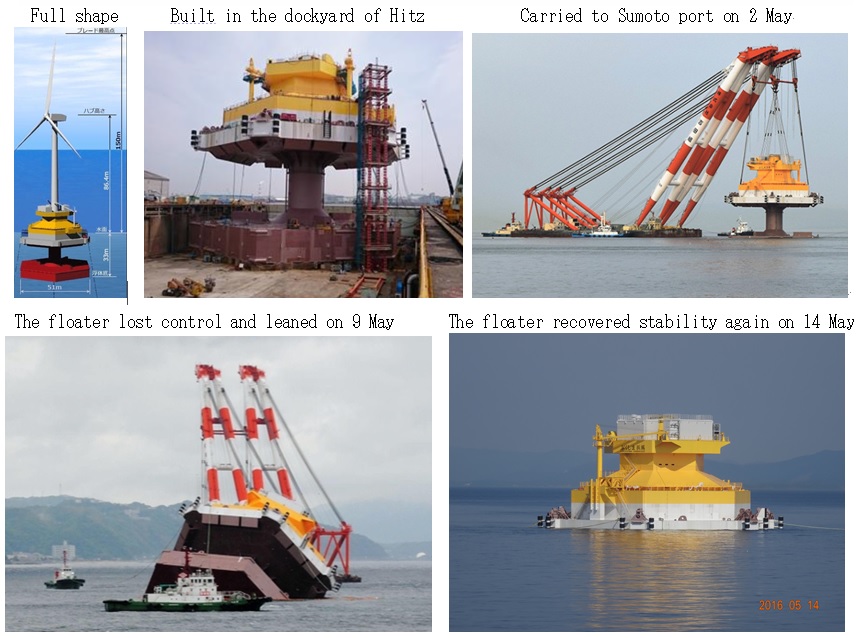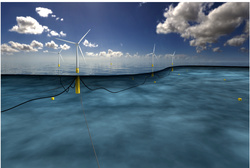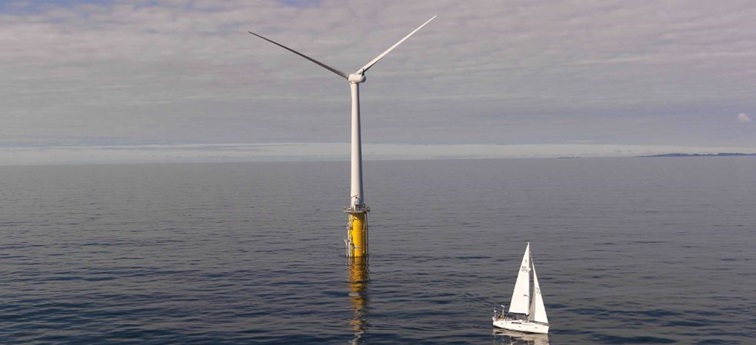News Release from windfair.net
Wind Industry Profile of
Floating offshore wind farm: Green light for Hywind
Since 2009, the prototype of the Hywind project has been located off the Norwegian coast near Stavanger producing electricity. Developer Statoil originally wanted two years to investigate whether this type of energy production was commercially viable. However, researches subjected ultimately until 2013, when it was decided to first build a whole wind farm with several turbines, to provide the market practicality test.
Late last year, Statoil settled for a location 25 km off the coast of Aberdeen in Scotland where the 30 MW Hywind wind farm will be erected. There the six 6 MW Siemens turbines will be put into water depths of about 100 – 120m. Based on Statoil’s background in design, installation and operation of floating offshore oil and gas platforms, Hywind has been designed as a slender cylinder structure, chosen as the most feasible and economical concept for a floating wind turbine. The structure is ballast-stabilized and anchored to the seabed. The mooring system consists of three mooring lines attached to anchors suited to the seabed conditions on site.
The prototype off the coast of Norway (Image: Statoil)
On Monday, The Crown Estate announced that energy company Statoil will get the required lease off the coast of Scotland, so construction can start. The project will cost a total of $ 245 million and the turbines will be connected to the grid and provide power for 20,000 households in 2017. “We are very pleased to develop this project in Scotland, in a region with a huge wind resource and an experienced supply chain from oil and gas,” told Leif Delp, Statoil’s project director GCR.
Yesterday, Statoil announced Spanish company Navacel supplier of the towers. Navacel will build five 83-meter-components, each having a diameter of 7.5 m at the base and 4.2 m at the top. Each of the four-part towers weighs about 620 tonnes. Statoil's proprietary Hywind-specific pitch motion controller is integrated with the turbine’s control system and mitigates excessive motions of the structure. This also eliminates the loss of energy due to aerodynamic or hydrodynamic movements and maximizes the power output from the turbine.
Stability actually is a big issue with floaters. Recently, a similar project in Japan caught attention with spectacular pictures: Off the coast of Fukushima, a 2MW floater supported by a floating substation was set up a few months ago. Currently, the copmanies involved are working on two other floaters on which 5MW turbines are to be erected. When towing one of the floaters out of the port, however, the whole construction tended to side and could only be stabilized and re-erected after a few days.

The Fukushima floater has been taking a bath (Image: JWPA)
- Author:
- Katrin Radtke
- Email:
- kr@windmesse.de



